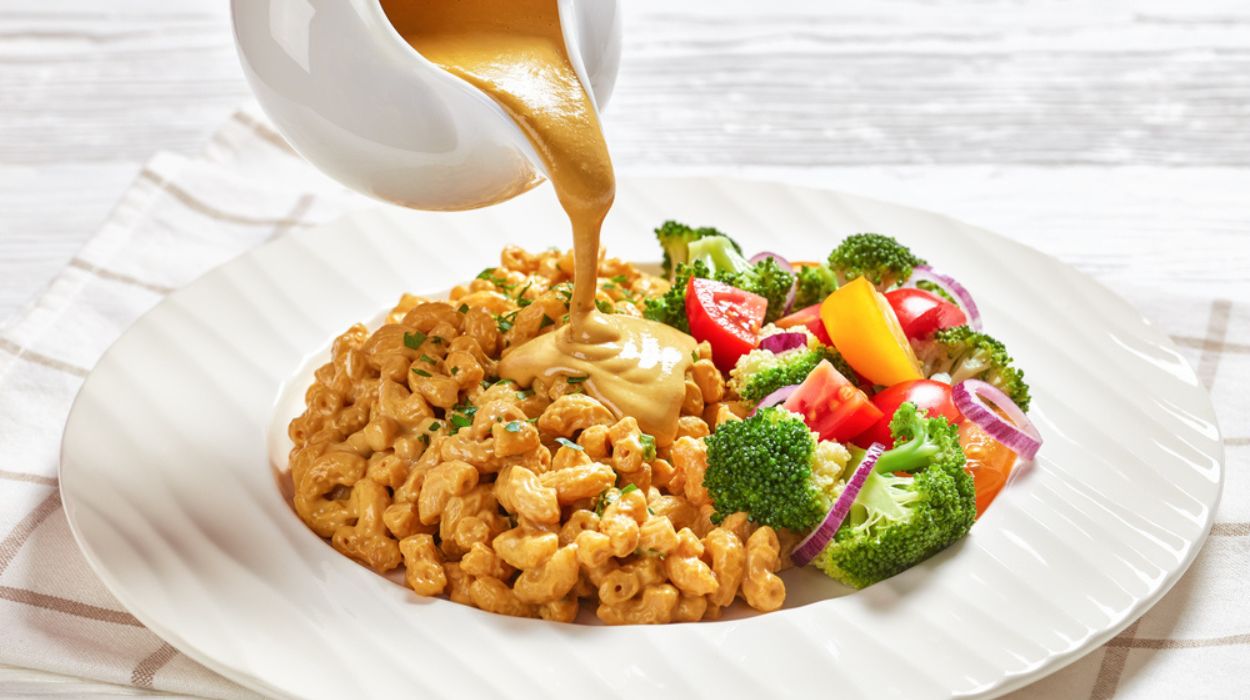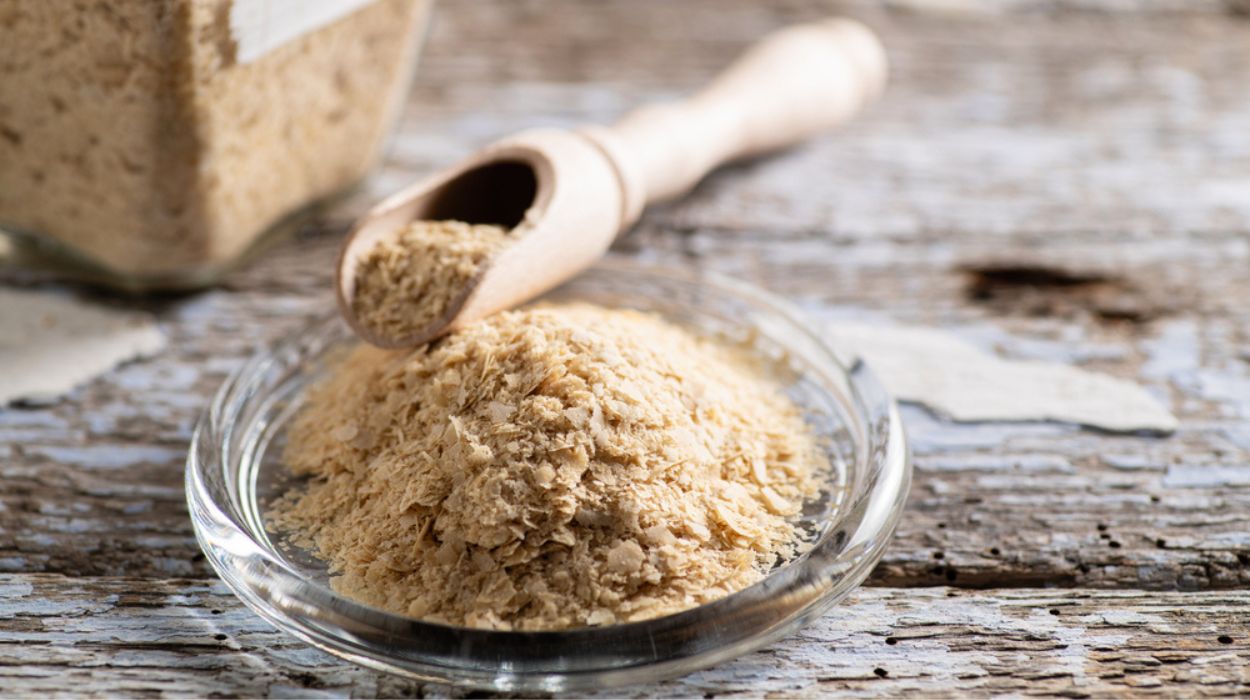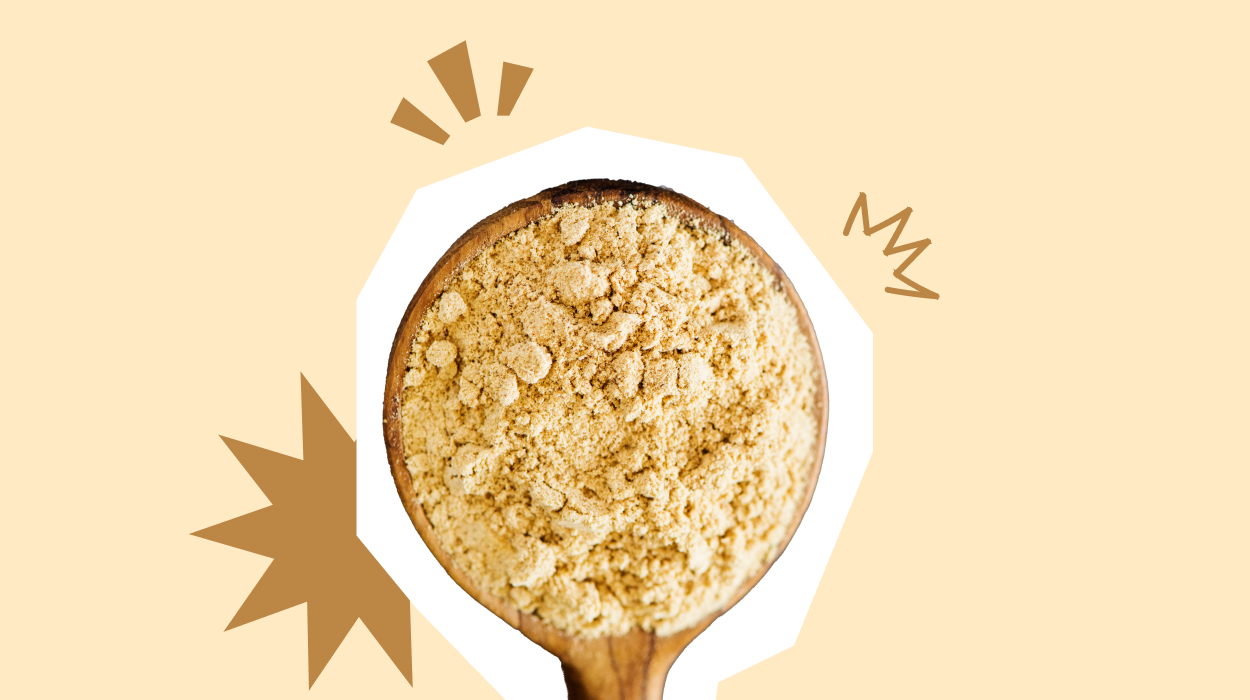Nutritional yeast is a powder, flake, or granule form of yeast, similar to the yeast used in baking bread and brewing beer. Nutritional yeast is frequently used as an additive or seasoning to give an earthy, cheesy taste to savory dishes, and to replace conventional cheese. In addition to tasting delicious, nutritional yeast flakes (especially fortified nutritional yeast) contain essential vitamins and minerals that can boost health in a number of ways, especially for vegans who may need some extra support. Learn more about how to use nutritional yeast here.
How To Use Nutritional Yeast: 7 Delicious Dishes
- Cubed Tofu Feta.
- Vegan Queso Sauce.
- Vegan Popcorn.
- Vegan Cauliflower Mac & Cheese.
- Vegan Pesto.
- Roasted Veggies & Potatoes.
- All-Purpose Dressing.
Great Nutritional Yeast Recipes To Follow
Cubed Tofu Feta
Here’s what you’ll need: tofu, nutritional yeast, apple cider vinegar, olive oil, lemon juice, miso, salt, garlic powder, and oregano.
You’ll want to drain and press your tofu to eliminate the excess liquid.
To make the marinade for the tofu, combine water, miso, olive oil, nutritional yeast, apple cider vinegar, lemon juice, salt, garlic powder, and oregano. Mix well.
Once your tofu is ready, cut it into cubes and then add it to the mixture to saturate it. From there, store in the fridge for at least an hour (if not overnight) to absorb all the savory flavor. Enjoy!
Vegan Queso Sauce
Vegan queso sauce can be made with potatoes, various nuts, and vegetables, with or without spicy peppers, but it can also be as simple as two ingredients: cashew cream and nutritional yeast.
Cashew cream is a blend of cashews and coconut milk, which gives you a rich, creamy texture. Just mix in nutritional yeast for flavor and nutrients.
Of course, you may want to add some jalapenos or other spices. If that’s the case, simply combine all your ingredients in a high-speed blender until everything is smooth. After that, mix in jalapenos (if you wish) and you can add some cilantro or parsley as a garnish. Enjoy with tortilla chips!
Vegan Popcorn
This one’s easy. Choose your favorite popcorn, stick it in the microwave, and let it pop. When it’s done, simply sprinkle nutritional yeast on top for flavor. This should replace butter, and so you’ll have a delicious, vegan, healthy snack.
Vegan Cauliflower Mac And Cheese

Use 2 pounds of cauliflower and break it into small pieces (the size of macaroni). Cook in a pan for five minutes, or until soft. Drain, then mix into the “ parmesan cheese” sauce.
To create the “parmesan cheese” sauce, blend potato, sweet potato, cashews, and of course, nutritional yeast. You can season the sauce with smoked paprika and cayenne pepper, too.
Put the mixture in a baking dish, and for a crunch, you can add panko bread crumbs on top (there is a gluten-free version, too). Bake in the oven as you would mac and cheese, and you’re ready to enjoy!
Vegan Pesto
For this, you’ll need ¼ cup of raw cashews, 2 cups of packed fresh basil, 2 tablespoons of nutritional yeast, 3 cloves of chopped garlic, 2 teaspoons of lemon juice, ⅛ teaspoon of sea salt, and 2-4 tablespoons of unsweetened and unflavored plant milk (soy, almond, etc.).
Put the cashews in a bowl then cover with boiling water. You’ll need to let them soak for 30 minutes before draining.
From there, put the cashews in a food processor and all the other ingredients (except the plant milk!). Cover and hit “process” until you get a smooth consistency.
Then add the plant milk one tablespoon at a time until you reach your desired consistency. Now you’re ready to add the pesto on top of pasta – be sure to use 2 tablespoons of pesto for every cup of cooked pasta.
Roasted Veggies And Potatoes
There’s nothing better than crispy, oven-roasted potatoes and vegetables. Baking and roasting is also one of the easier cooking methods because it requires less stirring and watching. The roasting process brings out the flavor in potatoes and vegetables, however, there’s no harm in adding some more. For a more flavorful, crispier (and healthier) batch of veggies and/or potatoes, sprinkle a little nutritional yeast on them either before they go in the oven, or after they come out. This is largely a matter of taste.
All-Purpose Dressing
Sometimes you need to dress up food – salad, rice, veggies – with a little sauce in order for it to be more appealing to the pallet. Not all nutritional yeast can be added to all sauce or dressing, but there’s one recipe that tastes particularly good:
Mix soy sauce with a little nutritional yeast, add a clove of chopped garlic, a little apple cider vinegar, and some filtered water. Blend with a stick blender in a jar until smooth, then use over rice, veggies, salad, or anything that needs a little pick me up!
What Is Nutritional Yeast?

Nutritional yeast is a food product that functions as a seasoning and has become a staple of vegan cooking – this is due to its heavy, plant-based protein and nutrient content, especially the fortified version. Nutritional yeast can either be unfortified, containing no additional vitamins or minerals (just the ones naturally occurring in yeast), or fortified, with additional vitamins and minerals added during processing.
Also referred to as “nooch,” nutritional yeast is a species of Saccharomyces cerevisiae yeast (known as baker’s yeast or brewer’s yeast in its active form). This is the same type of yeast used for brewing beer and baking bread, however, nutritional yeast is inactive, meaning, it won’t perform well in baking or brewing.
Nevertheless, nutritional yeast, which comes in powder, flake, or granule form, contains many nutrients, making it ideal to sprinkle into raw or baked dishes for vegans, vegetarians, carnivores, and everyone in between. You can often find nutritional yeast in the bulk bin of your local health food stores.
Nutritional Value Of Nutritional Yeast
Incorporating nutritional yeast into your diet is a great way to sneak in nutrients to almost any dish, especially savory ones (it tastes a bit like cheese). In two teaspoons (or 5 grams) of unfortified nutritional yeast you get 20 calories, and:
- 3 grams of protein
- No fat or sugar
- 2 grams of carbs
- 4% of the daily recommended amount of fiber
- 246% of the daily recommended amount of vitamin B2/riboflavin
- 109% of the daily recommended amount of vitamin B3/niacin
- 212% of the daily recommended amount of vitamin B6
- 59% of the daily recommended amount of vitamin B9/folate
- 313% of the daily recommended amount of vitamin B12
- 2% of the daily recommended amount of iron and potassium
Let’s look at one nutrient nutritional yeast contains protein. It’s not just any protein, but a complete protein – it contains all nine of the essential amino acids needed to qualify as a complete protein. This is excellent news for vegans who may not get enough protein in their diet. Nutritional yeast also contains trace minerals such as zinc, manganese, selenium, and molybdenum – all necessary for metabolism, growth, and immune health, as well as gene health.
Benefits Of Using Nutritional Yeast
Great Source Of Fiber
Fiber is crucial for health in more ways than one – it helps protect the heart and brain, improve digestion, and reduce the risk of several life-threatening diseases. However, the average American doesn’t get nearly enough fiber in their diet. Nutritional yeast is a great source of fiber, and because it comes in powder, granule, or flake form, it’s easy enough to sprinkle into your food. However, increasing too much fiber too quickly can be taxing on the body, so go low and slow – small amounts for a few days, then increase slowly. Also, make sure to up your water intake (fiber without water can also be difficult for the body to handle).
Contains Important Minerals
Adding nutritional yeast to your food is like adding a multivitamin, but with a better taste. Among the many vitamins and minerals it offers, it’s a particularly good source of the many B vitamins (from B1 to B12). This is especially important for those who don’t consume many animal foods – vegans often have to take B vitamin supplements to fill in the gaps in their nutrition. Containing all nine essential amino acids, it also offers an excellent source of protein for people who aren’t able to get enough.
Supports Immunity
Beta-glucan is a glucose polysaccharide (a multiple sugar molecule) that naturally exists in the cells of certain grains, bacteria, and fungi. The beta-glucan in nutritional yeast may play a role in helping to boost immunity. Studies have indicated that those who eat nutritional yeast are not only less likely to get sick, and have fewer symptoms and trouble sleeping if/when they do. The antioxidants found in nutritional yeast may also support immunity and help to combat more serious diseases.
Better Physical Recovery
Everyone needs time for physical recovery after exercise. Athletes who eat nutritional yeast have been shown to have increased energy and mood after workouts when compared to athletes who don’t consume it. White blood cells are lost during workouts, and it’s thought that the yeast helps to replenish them. This then has a cascading effect on muscle recovery and reducing inflammation. The zinc in the nutritional yeast may also play a role in repairing and restoring muscles.
May Support Healthy Pregnancy
Pregnant women are recommended to take a certain amount of folic acid during their pregnancy – between 400-800 mcg a day. The purpose of which is to support the healthy growth of the fetus. Nutritional yeast is a dense source of that acid, and may therefore prove beneficial as part of a woman’s diet during pregnancy. However, not all brands contain the same amount of folic acid, and as with any nutrient, you can have too much, so pregnant women should consult their doctors about dosage.
Can Relieve Constipation
Thanks to the fiber in nutritional yeast, your digestion can move smoothly. Just like a car runs on fuel, the digestive system needs fiber to keep the bowels moving smoothly and regularly. Fiber works by extracting water from the intestines and moving it to the colon to both bulk and soften stool. Interestingly, cheese (which tastes similar to nutritional yeast) can have a constipating effect, so the next time you’re in the mood for cheese, swap it out for nutritional yeast. You won’t taste the difference, but your body will thank you for it.
Can Improve Glucose Sensitivity
Some research suggests that nutritional yeast, especially chromium-enriched yeast, may help to lower fasting blood glucose levels as well as cholesterol.[1] This has been tested in animal studies, but it’s thought to have similar effects in humans. As fiber is a key player in blood sugar regulation (which is tied in with our glucose response) and nutritional yeast is a good source of fiber, researchers believe the connection holds strong promise.
Conclusion
Fortified nutritional yeast is as much a supplement as it is a food product, due to its heavy nutrient load. It’s packed with vitamins, minerals, and fiber, and comes in easy-to-use flakes, granules, and powder. This makes it simple to add to anything from meat to popcorn, to rice. Its earthy, cheesy flavor also makes it an excellent swap for dairy cheese for those who are lactose intolerant or choose not to eat animal products.
Frequently Asked Questions
You certainly can, but you may not want to. Nutritional yeast has a cheesy flavor, so it may not pair well with sweeter foods. Try it for yourself, though. You may like it!
No. Nutritional yeast can be beneficial and enjoyable for everyone, though it may be helpful for those who don’t get enough B vitamins in their diet.
Anyone with a yeast allergy or sensitivity should avoid nutritional yeast. Also, if you have candida or other yeast/fungal infections, consuming any yeast may aggravate the condition.
 Expert's opinion
Expert's opinion
